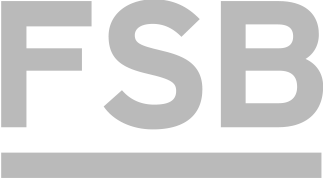International Exchange
Course details
Student Mobility > Programmes and Courses > Courses in English > Course detailsBasic of Lifting and Conveying Machinery
- Teaching: Completely taught in English
- ECTS: 4
- Level: Graduate
- Semester: Summer
- Prerequisites:
- No conditions.
- Load:
Lectures Exercises Laboratory exercises Project laboratory Physical education excercises Field exercises Seminar Design exercises Practicum 30 0 0 0 0 0 0 0 - Course objectives:
- Familiarizing and study of the Lifting and Conveying Machinery construction elements, their usage, choice and the methods of calculation.
- Student responsibilities:
- Grading and evaluation of student work over the course of instruction and at a final exam:
- Activity during classes (lectures and exercises) - 5%, Preliminary exam - 55%, Oral exam - 15%
- Methods of monitoring quality that ensure acquisition of exit competences:
- On each exercise a task is given from the explained chapter as homework assignment.
- Upon successful completion of the course, students will be able to (learning outcomes):
- After the course is successfully completed, student will be able to: - differentiate lifting and conveying machinery according to type of transfer and application field; - derive: efficiency in working and braking mode, stable drive resistances, transfer ratio of a combined mechanism; - create a sketch for a given pulley with sheave speed kinematics and related transfer ratio; - recognize, calculate and choose steel rope according to given work conditions; - asses application fields for a given gripe system; - use calculation methods for simple elements of lifting and conveying machinery
- Lectures
- 1. Fundamentals: terminology, classification, significance and importance of materials handling and conveying. Characteristics and types of the conveying and lifting machinery, conveyer capacity. Characteristics of transported materials.
- 2. The elements of the lifting machinery: lifting appliances; lifting tackles, basic principles for rope drives, computation and design.
- 3. Kinematic and dynamic analysis of the lifting mechanisms. Reduced mass of inertia and reduced force. The equation of motion of the mechanism. The velocity and acceleration of motion.
- 4. Motion resistance, specific resistances, drive power.
- 5. Drive mechanisms motion phases and transportation system speed choice.
- 6. Reduced mass of inertia and reduced force. The equation of motion of the mechanism.
- 7. The velocity and acceleration of motion, efficiency.
- 8. Drives: electric motor drives, hydraulics drives, hand drives.
- 9. Types of pulleys.
- 10. Types of ropes, durability and calculations.
- 11. Drums, sheaves, rope connections, chains.
- 12. Mechanical components for drive systems, mechanical brakes, safety hand cranks.
Hoists and winches. - 13. Lifting mechanisms, driving mechanisms, wheels and wheel calculations.
- 14. Classification of hoisting appliances and their component parts.
- 15. Fatigue strength, basic calculations, sizing criteria.
- Exercises
- 1. Auditorijl exercises.
Examples of computation, analysis and design of the lifting and conveying elements. - 2. Design exercises. Examples of computation, analysis and design of the lifting and conveying elements.
- 3. Design exercises. Examples of computation, analysis and design of the lifting and conveying elements.
- 4. Design exercises. Examples of computation, analysis and design of the lifting and conveying elements.
- 5. Design exercises. Examples of computation, analysis and design of the lifting and conveying elements.
- 6. Design exercises. Examples of computation, analysis and design of the lifting and conveying elements.
- 7. Design exercises. Examples of computation, analysis and design of the lifting and conveying elements.
- 8. Preliminary exam 1.
- 9. Design exercises. Examples of computation, analysis and design of the lifting and conveying elements.
- 10. Design exercises. Examples of computation, analysis and design of the lifting and conveying elements.
- 11. Design exercises. Examples of computation, analysis and design of the lifting and conveying elements.
- 12. Design exercises. Examples of computation, analysis and design of the lifting and conveying elements.
- 13. Design exercises. Examples of computation, analysis and design of the lifting and conveying elements.
- 14. Design exercises. Examples of computation, analysis and design of the lifting and conveying elements.
- 15. Preliminary exam 2.
- Compulsory literature:
- D.Ščap, Prenosila i dizala, Podloge za konstrukciju i proračun, Liber, Zagreb, 1990.
D.Ščap, Prenosila i dizala, udžbenik u izradi (available for students in electronical format).
D. Ščap, Z. Herold, M. Hoić: Zbirka zadataka iz prenosila i dizala (under development - available for students in electronical format). - Recommended literature:






